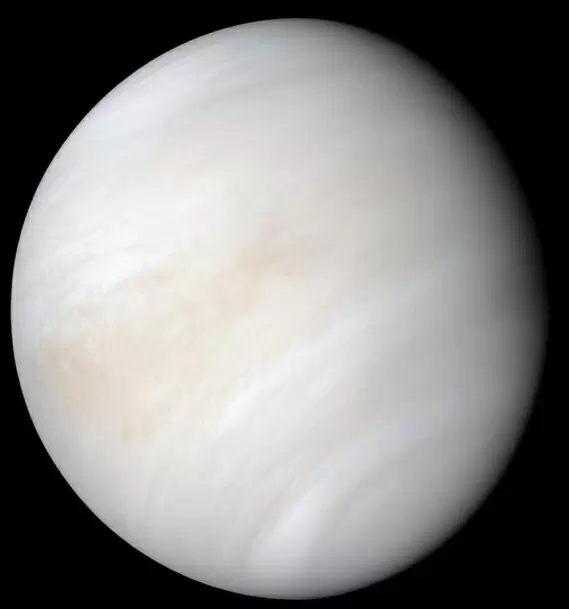'Tsunami' in Venus's clouds may explain its fast-moving atmosphere
London
27-March-2023

Photo : IANS
A team of Spanish scientists has led the first detailed study of the evolution of the discontinuity of Venus's clouds, that are like a gigantic atmospheric wave.
The observations, by a group of scientists from the Universities of Seville and Basque Country in Spain, were carried out non-stop for more than 100 days. They detailed their findings in the journal Astronomy & Astrophysics.
The team used the Ultraviolet Imaging (UVI) camera that was on board the 2022 Japanese mission Akatsuki to see the highest clouds in Venus.
They found that the discontinuity was capable of propagating for a few hours to around 70 km above the surface of Venus.
"This is surprising, because until now the discontinuity appeared 'trapped' in the deepest clouds and we had never observed it at such a high altitude," said astrophysicist Javier Peralta from the University of Seville.
In general, regions where winds have the same speed as a wave act as a physical "barrier" for the propagation of that wave.
Watch This TWL Video
Because winds gradually increase with height on Venus and have higher speeds than the discontinuity at the peak of the clouds, the discontinuity attempts to propagate upwards from the deep clouds, but meets this obstacle on its way and eventually dissipates.
Thus, experts were surprised when they measured the winds in the high clouds with Akatsuki: they found that they were unusually slow in the first half of 2022, several times slower than the discontinuity itself. And if the winds grow much more slowly with height, the discontinuity takes longer to find atmospheric regions as fast as itself, allowing it to propagate to higher altitudes.
"Measuring the winds on Venus is essential to try to explain why Venus's atmosphere spins 60 times faster than the surface," Peralta said.
Peralta explained that this atmospheric phenomenon is known as superrotation. "It also happens on the Saturn moon Titan and on many exoplanets, but after more than half a century of research we still cannot satisfactorily explain it," he said. - IANS
More Headlines
Indian Startup Founder Salaries Drop 25% Amid Funding Winter
DMK to Launch Statewide Protests Against NEP’s Three-Language Formula
Air India Faces Backlash as Elderly Passenger Denied Wheelchair Falls, Lands in ICU
Shiv Nadar Transfers 47% Stake in HCL Promoter Firms to Daughter Roshni
Telangana Cabinet decides to develop Future City on 30,000 acre
Indian Startup Founder Salaries Drop 25% Amid Funding Winter
DMK to Launch Statewide Protests Against NEP’s Three-Language Formula
Air India Faces Backlash as Elderly Passenger Denied Wheelchair Falls, Lands in ICU
Shiv Nadar Transfers 47% Stake in HCL Promoter Firms to Daughter Roshni
Telangana Cabinet decides to develop Future City on 30,000 acre










